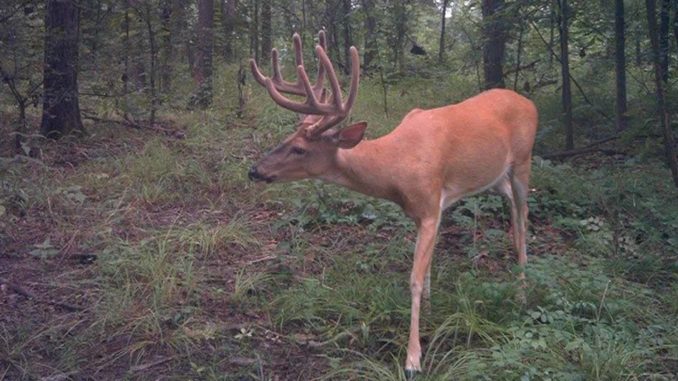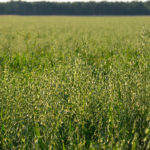
Spring food plots, minerals not always costly
Spring in the Carolinas is a special time for outdoor fans. The sounds and sights of new life flood the countryside with fresh greenery and blooms everywhere and a musical greeting from the fresh flock of migratory birds back from the tropics. By April 1, spring is in full color, welcoming turkey hunters and others ready to prepare their properties for the warm-season bliss. If the management budget is falling short of one’s hopes and dreams, hunters can still improve their properties without breaking the bank.
One of the most-important aspects of deer management is adequate food. One of the most-important periods of the year to provide nutrition is spring and early summer. Bucks and does can benefit from a fortified diet one way or another.
Most often, bucks are the stars of the show, but the girls need a spot at the kitchen table as well. Spring is fawning season in the South. Does need a solid food source to produce and nurture healthy offspring. When fawns are provided a solid nutritional base during the first few months of their lives, they have a much-better opportunity to strengthen and become sustainable with without mother’s aid. A solid food source is what deer need this time of year.
Economical spring plots
While supplemental feeding can provide necessary foods, it can be expensive and very time consuming. Food plots by themselves are more economical, but plot preparation and maintenance can be challenging on a limited budget. Thankfully, some economical options are available for spring food plots that will work well, as long as they are planted before the soil temperature rises too high.
Deer need foods rich in protein. Most native spring and summer foods are low in protein content, and the food-plot seeds can be attractive, with a higher nutritional value. The best, economical options for a warm-season planting are mixtures of legumes and grains such as oats, buckwheat, cow peas and red clover. The mixture of legumes and grains will work with each other by providing necessary nitrogen and competition to help prevent weedy invaders.
Out of these four seed varieties, oats are the cheapest, easiest and quickest to establish. The addition of buckwheat, cow peas and red clover will add longevity, variety and a varied maturation. For the best results, these should be planted early — but after the last frost. The spring planting mix should have a strong base of oats, with smaller per pound dosages of buckwheat, red clover and cow peas. A broadcast mixture of 40 pounds of oats, 15 pounds red clover, and 15 pounds buckwheat is a good blend that will provide a solid food source for the spring and summer season. Broadcast seeds should be placed on a prepared seed bed and very lightly covered with a chain harrow. And for the best results, the soil pH should be greater than 6.0, and 300 pounds of 19-19-19 should be added at the time of planting.
Deer need a solid food source during the spring and summer. Land managers should know planting something economical is better than nothing at all.
Nutritional additives
Spring and early summer nutrition is important for bucks and does. For bucks, it is one of the most-important seasons. The process of antler growth begins as a response to increased day length, as early as April. Bucks need supplemental nutrition and extra chemical inputs to fuel their antler growth.
The soft antler tissue that will eventually become their calling card is the fastest-growing mammal tissue on the planet. Antler growth has been measured at a rate of a quarter-inch per day. It takes 128 days to grow their antlers from start to finish.
Since the deer’s diet is often low in calcium and phosphorus, a portion of the antler tissue will be sourced from the deer’s internal bone structure through a process called physiological osteoporosis that weakens the skeletal system. However, only a small amount of material will come from their bones; the majority of the minerals must come from their diet. In areas where a diet fortified with calcium and phosphorus foods is lacking, the potential for an optimal antler configuration is also going to fall short. A mineral-rich diet during spring and summer is a critical component for hunters looking for optimal antler potential.
Does will also benefit from supplemental minerals because they pass large quantities of calcium and phosphorus to their fawns during lactation.
The most-economical options to provide deer with minerals range from tasty salt blocks or loose mixtures infused with calcium, phosphorus, magnesium and several trace minerals important for antler growth and metabolic function.
Salt by itself is one of the most-important parts of the mixtures, but it has the least benefit. While salt contributes to a healthy metabolism and is a required supplement in any mammal, the salty flavor is what brings in the deer and keeps them coming back. The minerals by themselves are considered bitter, and the salt is necessary for easy consumption.
Deer crave salt during the spring and summer due to the high concentrations of water and potassium in their natural forage. It is no different than packing vitamins in a kid’s Gummy Bears. It’s a perfect Trojan horse the deer will fall for every time and get exactly what they need to reach their growth potential.
There are many commercial mineral products targeting sportsman, including Whitetail Institute’s Imperial Whitetail Brand 30-06 Mineral Block or Evolved Habitat’s Deer Cane, which has a little dextrose incorporated into the mix. These products are exactly what deer are looking for and work very well. However, hunters can begin a more-economical mineral supplement program by purchasing commercial cattle mineral supplements or creating their own mixtures with readily available materials from the local agriculture supply shop.
A good home recipe should contain one part dicalcium phosphate, one part trace minerals and two to three parts salt. Dicalcium phosphate and salt can be easily purchased in bulk quantities or in 50-pound bags at very reasonable prices.
But how many mineral stations should be set up? It all depends on the site and natural availability. A good rule of thumb is one mineral station per 50 acres, and the best sites are loaming or clay soils over sandy soil sites. The minerals will eventually leach through the sand grains quickly after rains and become unavailable.






Be the first to comment